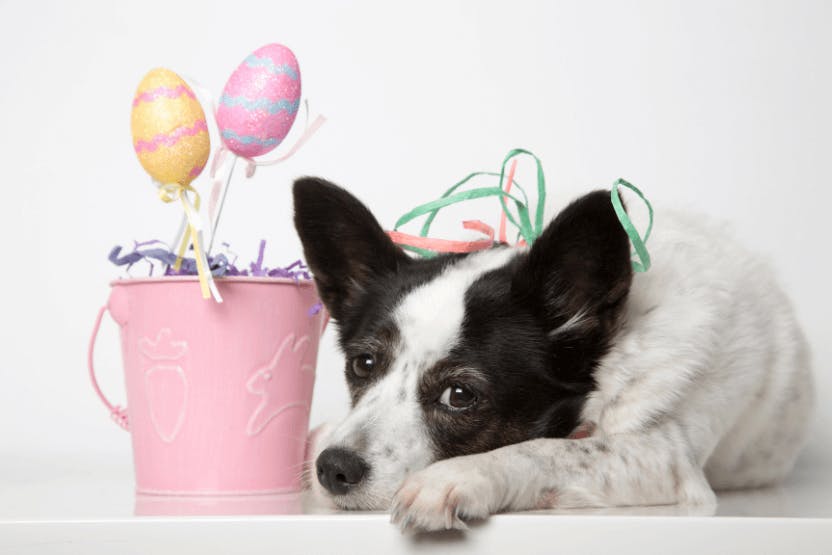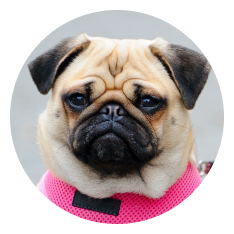You don't have to be a kid to get swept up in all the joy and fun of Easter. With spring in the air and chocolate in your belly, it really is a magical time of year to share with your family.
Of course, sharing Easter with your family means including your dog in the celebrations. But while your fur-baby will love the bonding time and joining all the Easter activities, there are also some Easter holiday hazards that can cause serious problems for dogs.
From chocolate to toxic spring plants and flowers, let's take a look at how you can keep your dog safe this Easter.

As every kid knows, Easter means chowing down on copious amounts of chocolate and candy. From Easter egg hunts to Easter baskets, there's certainly no shortage of sweet treats floating around at this time of year — and that's very bad news for our dogs.
Chocolate is highly toxic to dogs and cats. It contains theobromine and caffeine, two compounds which cause
chocolate toxicity in dogs and could make your pet seriously ill. Symptoms range from
vomiting and
diarrhea to
restlessness, an
elevated heart rate,
seizures, and even heart failure. Baking chocolate and dark chocolate are the most dangerous because they have the highest theobromine content, but milk chocolate can also cause serious problems. And while there's minimal risk of chocolate poisoning if your dog eats white chocolate, it can still cause life-threatening
pancreatitis. With this in mind, make sure to keep chocolate well away from your dog at all times.
Candy is also a common Easter hazard for dogs.
Xylitol is an artificial sweetener found in many sugar-free candies and
chewing gums, and it's extremely toxic to dogs. Eating other candies in
excess can also upset your dog's stomach and cause vomiting and
diarrhea, so keep your dog away from all these
Easter treats.

Easter baskets are a much-loved holiday tradition for many families, but they can also pose dangers to your pet. While that long plastic Easter grass might look great, some dogs think it looks good enough to eat. And that's a big problem, because this plastic Easter grass can become entangled and stuck within your dog's gastrointestinal tract, causing a range of health issues.
This can lead to symptoms like vomiting, diarrhea,
loss of appetite,
lethargy, and
abdominal pain, and potentially cause an internal obstruction that requires emergency medical attention. So keep Easter baskets well away from your dog or, better yet, don't use any plastic Easter grass at all.

Easter baskets aren't just about chocolate and candy. Many also contain plastic toys, games, and Easter eggs, and these often tend to be cheaply made. Unfortunately, these toys might also look like a tasty treat to a curious dog, and can break into small and sharp pieces quite easily. Not only do they pose a choking hazard, but they could also cause some sort of internal injury.
That's why it's important to supervise your dog closely around any novelty toys this Easter. You can also check out our guide to the
top Easter activities for dogs for some suggestions on how to safely entertain your dog over the holiday weekend.

Easter also means the arrival of spring and the spring planting season. But as your yard becomes filled with colorful springtime blooms, and as you plant new additions in your garden, be very wary that you're not exposing your dog to any toxic plants.
Keeping your dog safe this Easter is easy. Now that you're aware of the major Easter hazards for dogs, all you have to do is take a few simple steps to make sure your fur-baby stays out of trouble this holiday weekend. And with your dog looked after, you can focus on
sharing the celebrations with your furry family member.


